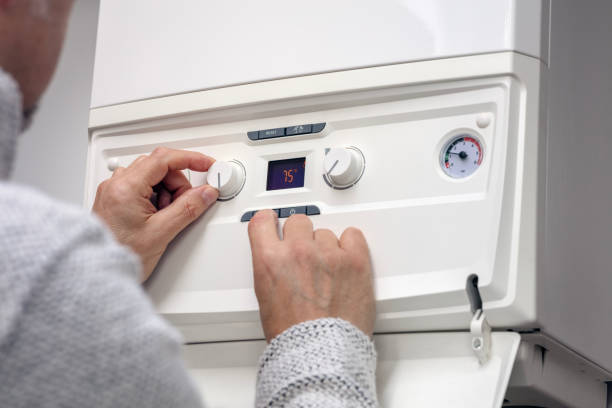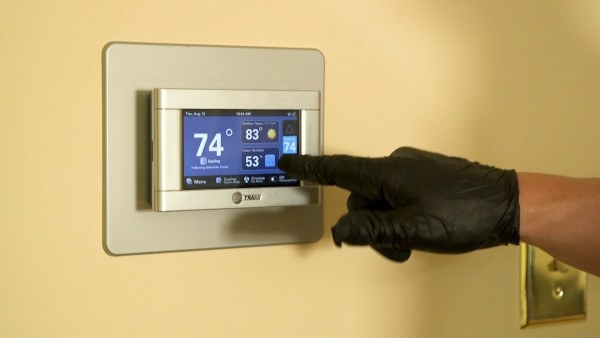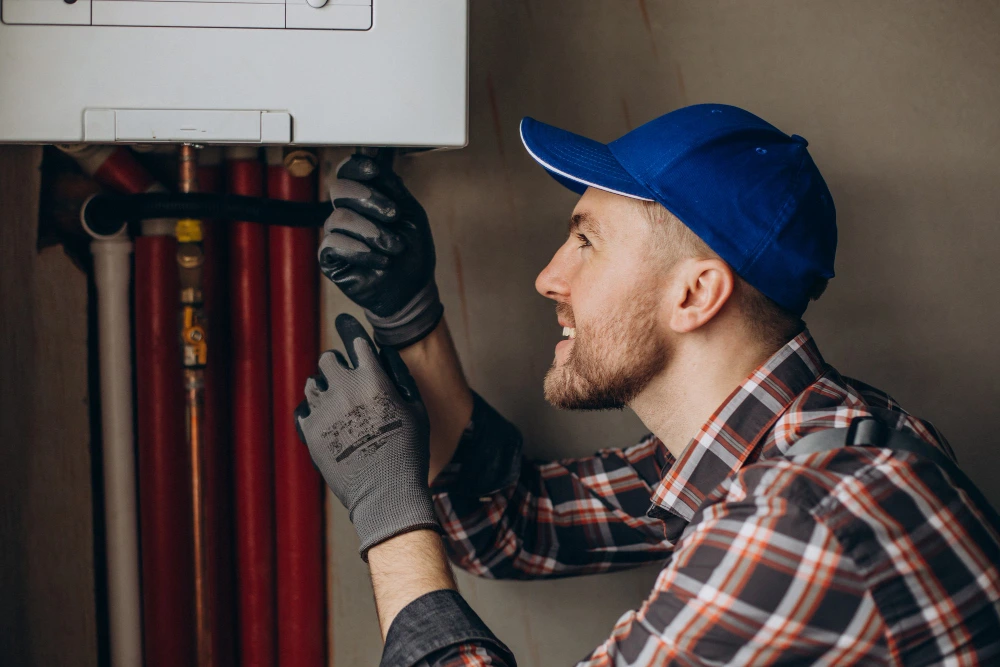There’s nothing worse than waking up with frozen toes and realising you’re about to add heating system repairs to your to-do list. Welcome to the dark side of Mornington winters – stunning beaches outside, malfunctioning heater inside. If your system’s suddenly gone cold, you’re not alone.
Heating fixes can feel like roulette: will it be a quick tweak or a wallet-walloper? In this guide, I’ll break it all down for you – from gas to ducted to hydronic, with a side of humour and a splash of common sense. Whether you’re a young pro juggling coffee runs and renos or just trying to stay warm without selling a kidney, you’ll get the facts, the costs, and a few cheeky tips to keep your home toasty.
Across Australia, home heating and cooling gobble up almost 40% of household energy use. Your heater is a major bill! So, whether you have a flued gas heater in Carrum Downs or hydronic radiators in Mount Martha, knowing how much a fix might cost is clutch. We’ll spill the tea on typical repair bills for each system type, plus tips to save on emergency calls. Let’s dive in!
Quick Cost Comparison by Heater Type
Before we get into the nitty-gritty, here’s a “cheat-sheet” table of rough repair costs for different heating systems. (Keep in mind: actual prices vary by issue, age of gear, and whether you call after-hours. Always get a quote!)
| Heating System Type | Typical Repair Cost (AUD) | Notes/Examples |
|---|---|---|
| Gas Heaters (wall/log fires) | ~$150 – $350 | Fixing pilot light, fans or valves. Check gas leaks safely! |
| Electric Heaters (panel/baseboard) | ~$100 – $250 | Element or thermostat repairs; usually simpler, fewer parts. |
| Ducted Heating (gas or heat-pump) | ~$150 – $400 | Ducted gas or reverse-cycle. (Complex) filters, motors. |
| Hydronic (boiler/radiators) | ~$300 – $1,000 (minor repair)$2,700 – $7,000 (boiler replacement) | Boilers, pumps, pipes. Replacement is pricy (see underfloor). |
- Cost factors: Age and brand of the system, part availability, labour rates (higher in winter!), and how nasty the repair is (snakes in vents? Darling that actually happened!) all affect your bill.
- Emergency vs. scheduled: Emergency call-outs (think 2 AM breakdowns) can be 50–100% more due to overtime. Plan ahead if you can.
These figures come from Australian repair cost guides – for example, a “basic” ducted heating repair runs about $150–$400. Notice hydronic boilers have a big jump on replacement: that’s because replacing a boiler and piping can hit the thousands. Now let’s unpack each type with stories and tips:

Gas Heater Repairs
Gas heaters (wall furnaces, flued log fires, or gas ducted systems) are popular ‘cause gas is cheap per unit (about $0.02/MJ vs $0.26/kWh for electricity). But they have fragile bits: pilot lights, thermocouples, fans, gas valves. If your old Braemar or Vulcan heater starts playing hide-and-seek with flames, you’ll usually pay on the order of a few hundred dollars to fix it – roughly $150–$350 in many cases.
For example, Sarah from Mt. Martha once skipped her annual service, and her 10-year-old Sirocco died on a rainy night. She copped a $320 fix for new ignition parts (still cheaper than shivering with a flat doona).
Many gas heater repairs just need a certified tech and a quick parts swap. The not-so-good news: don’t DIY this one – gas regs (AS/NZS 5601, AS/NZS 5263) demand a licensed plumber/gasfitter for safety.
Pro tip: Keep your heater tuned up. Professional gas heater servicing (like what Double A Heating & Cooling offers locally) can catch issues early. A well-serviced unit not only lasts longer, but also runs leaner. Remember, every extra efficiency star on that heater means roughly 10% energy saved. (Braemar proudly touts a 7-star model that slashes about $577 off your gas bill annually versus an old 3-star.) So, if you’re coughing up big repair bills, consider if an upgrade might be smarter in the long run – rebates on new high-efficiency gas heaters can sweeten the deal.
Everyday language bullet: A handy rule – if the fix is under $500 and your heater is <15 years old, it’s usually worth repairing. If it’s been around since broadband was dial-up (think 20+ years), it might be time to replace. Ask your technician (like Ash at Double A!) whether repairs make sense.
Electric Heater Repairs
Electric heaters (wall panels, baseboard heaters, portable oil-filled units) are the low-tech sidekick. They have fewer moving parts – mostly just a heating element and a thermostat – so repair bills are often lower. Think $100–$250 for fixes like a new element or control board. If your panels stopped heating a room, the tech might simply swap out a fuse or thermostat.
On the flip side, electricity is much dearer energy than gas, so these bad boys can swell your power bill. (A quick energy tip: make sure your panel thermostats are not set to high, and use a timer or Wi-Fi controller to avoid running them when you’re at work.)
Anecdote: Jake from Mornington West proudly told us he tried fixing his dad’s panel heater by googling instructions – ended up poking himself. Moral: electrical components can shock! Better to let a pro handle live wires.
Electric repairs are usually straightforward and cheap, but if you see a bill approaching several hundred, consider it a heads-up: maybe it’s time for multiple smaller units or a single big heat-pump (which could be cheaper to run).
Ducted Heating Repairs
Ducted heating systems (either gas ducted or reverse-cycle “split” systems) are the Taj Mahals of home comfort – lovely but complex. You’ve got blowers, heat exchangers, sensors, and a labyrinth of ductwork under your roof. Repair costs here tend to be higher because of the labour (you might pay more if the tech must crawl through insulation!).
Typical fixes include cleaning or replacing clogged filters, fixing faulty zone controllers, or replacing motors and capacitors. A common bill: on the order of $150–$400, similar to single-gas repairs. But if the fan motor dies in the middle of winter or the heat exchanger splits, that can go higher.
Last June in Frankston, Donna’s ducted gas heater stopped putting out heat. On inspection, a bird’s nest had jammed the blower fan (true story!). The cleanup and fan replacement set her back $450. Ouch, but hey – she’s warm again.
Remember if your ducted heater is 15 years old or more, parts become scarce and costs skyrocket. Experts say well-maintained ducted systems last 10–20 years (average ~15). If you find yourself coughing up $$ for repeat fixes and your unit is skating past its birthday, it might be better to upgrade. (Plus, newer units are much more efficient – more stars = more savings.)

Hydronic (Boiler and Radiator) Repairs
Hydronic heating – that’s boilers pumping hot water through pipes to radiators or underfloor loops. It feels luxurious (goodbye cold toes!), but the plumbing makes it pricey to service. Common issues: boiler ignition failures, pump wear, airlocks or leaks in the pipes.
Minor fixes might be $300–$1,000 (bleeding radiators, fixing a valve, or replacing a pump). But a full boiler replacement is a serious coin: often $2,700–$7,000 for a new unit and installation. No wonder homeowner Pete from Mornington jokes he can heat his house with that kind of money. 😉
Hydronic systems last long – often 15–20 years – but when they age, parts can fail catastrophically (think bursting pipes). If your system is dripping or your boiler is “knocking”, act fast. Leaks can cause floor or ceiling damage on top of energy waste.
In short: hydronic fixes are fiddly. Always get a licensed plumber with boiler experience. While $$, hydronics heat evenly and quietly. Factor in those comfort benefits when budgeting. If your system is close to two decades, start planning a replacement before it becomes an emergency project.
Key Cost Factors & Savings Tips
- System Age: Older heaters often cost more to repair (harder-to-find parts, lots of wear). As a rule, any unit 15+ years old is likely near end-of-life.
- Scope of Work: Simple part swaps (thermostats, elements) are cheaper. Major jobs (motor swaps, new heat exchangers) cost more.
- Labour and Access: Heating techs usually charge per hour or call-out. Ducted and hydronic jobs can be labour-intensive (attic crawl or rooftop boiler), upping the bill.
- Emergency vs. Off-Peak: After-hours fixes can be double-time rates. Save by scheduling service in shoulder seasons or by bundling maintenance calls.
- Efficiency Matters: If your repair cost rivals a new system’s, consider replacement instead. New high-efficiency units often qualify for rebates, and every extra star means ~10% energy saved (that’s real dollars back in your pocket!). A 7-star gas heater, for instance, saves about $577/year vs a 3-star, so think long-term.
Conclusion & Takeaway
There you have it – the full lowdown on heating system repairs costs for gas, electric, ducted, and hydronic systems on the Mornington Peninsula. We’ve seen that minor fixes are often a few hundred dollars, but major jobs (or really old systems) can run into thousands. Remember, the cheapest fix isn’t always the best fix – safety and efficiency count in the long run. Use a licensed local expert (the kind who knows our Peninsula climate and regs) and get multiple quotes if you’re unsure.
Recap: Gas heater service/repairs are roughly $150–$350, electric panel fixes about $100–$250, ducted around $150–$400, and hydronic boiler replacements can top $2,700. Stars matter too – a high-efficiency heater will save you on bills.
Don’t let the chill linger. If you suspect a problem, ring a pro. Local experts like Double A Heating & Cooling (Mount Martha) are just a call away. They offer on-time heater servicing and more, so you can stay warm and keep your budget happy. Stay cozy, Mornington Peninsula – we’ve got your back (and your heater)!

